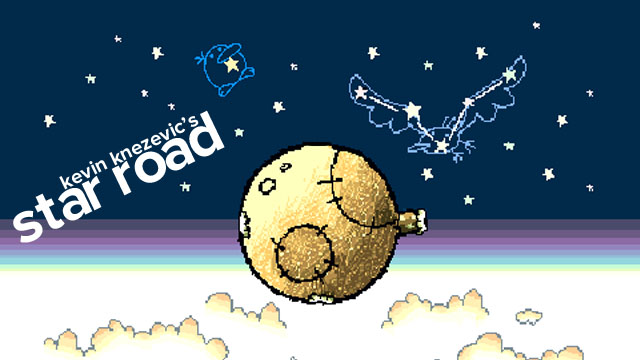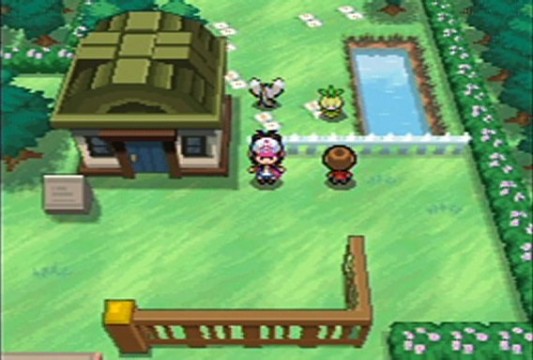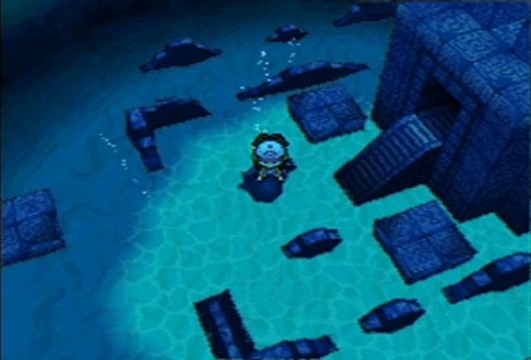
I always have a hard time picking a “game of the year.” Between the number of platforms I own and the sheer breadth of titles for each, I don’t see how anyone can possibly encapsulate twelve months of gaming in a single release. And yet, despite my usual reluctance to name a clear favorite, there’s a certain pair of monster-catching titles that stand out amongst all of the other games I’d recently played, making the choice considerably easier for me this year.
It’s not for a want of contenders, either; nearly every one of Nintendo’s properties saw a major release in 2011, and each proved to be an excellent title in its own right. No, the reason Pokémon Black and White stick out so firmly in my mind amid such stiff competition is their originality. Each of the company’s other releases was no doubt a fine addition to its respective franchise, but the one common fault among them was their conservatism– Super Mario 3D Land culled together various elements from the plumber’s history to create a title that was unabashedly rooted in the past, while Mario Kart 7 offered yet another iteration on the same basic game concept. Even The Legend of Zelda: Skyward Sword, for all its promise of innovation, undermined its own attempts at progressing the series by borrowing heavily from Twilight Princess. In light of all this, Pokémon Black and White seem like the most daring titles to have come out of Nintendo in the past twelve months, doing more to shake up their foundation than any of the company’s other properties.
You’d never be able to guess it from looking at them, though. Like every Pokémon game before them, Black and White stick very closely to the formula established by the Red and Blue versions. Players begin the adventure in an idyllic little town on the outskirts of a major city, where they and their childhood friend (or, in this particular case, friends) receive their very first Pokémon companion from the local professor. After sufficiently preparing for the journey ahead, they leave the comfort of their rural home and travel about the surrounding region, collecting and raising other monsters and challenging the game’s eight boss characters, all the while sabotaging the insidious plans of a terrorist group bent on world domination. It’s a well-worn tale, to be sure, one that is no doubt beginning to show some signs of age as the franchise quickly approaches its sixteenth (!!) anniversary, but Pokémon Black and White are able to innovate within these parameters just enough to inject some vitality back into the long-running series.

Nowhere is this more apparent than in Unova itself. Unlike past regions, which all cleaved to a similar stylistic motif, Unova is the first modernized setting in Pokémon’s history. This alone may not seem like a particularly noteworthy distinction, but within the context of the games it adds a palpable sense of exoticness to the adventure. Here is a region unlike any other, one whose unique and varied environments set it apart from the rote backdrops of previous titles. With those games, you could generally expect what sights you’d see along your journey, but each new city you come across as you make your way through Unova, from a sprawling metropolis located at the heart of the region to a village nestled in the hills to a tiny settlement built atop an ancient stone bridge, invites a feeling of discovery that has been absent from the series since arguably Gold and Silver.
What’s more, the little tweaks to the formula that have been effected help streamline the adventure considerably. Wild Pokémon, for instance, no longer distribute a set amount of experience points per battle; now they dole out a weighted share based upon the level of your own monsters. This prevents players from level grinding in the early portions of the game, forcing them to move ever forward if they wish to train with any sort of efficiency. As significant as this particular change may seem, it is the HMs– or rather, the series’ approach to them– that have undergone the most substantial rethinking. Where once they were required to overcome environmental obstacles and progress through the story, they now have been largely excised from the proceedings. Not only does this remove the need to carry around a dedicated field Pokémon (freeing up a valuable slot in your party for a more useful monster– sorry, Bidoof), it also has the added benefit of quickening the games’ pace. Without an artificial blockade standing in the way, players can travel through Unova almost unhindered, reaching their goal much more quickly than in any previous Pokémon title.
Of course, that is not to say HMs have been eschewed completely; rather, their use is now largely concentrated in Black and White’s endgame. Even after clearing the main quest, much of Unova still remains uncharted, giving players an incentive to continue their adventure long after they see the credits roll. To reach these areas, they will have to employ the full range of HM moves they’ve come to expect from a Pokémon title, pushing boulders to clear pathways, cutting down trees, and surfing across bodies of water as the environment dictates. It’s not quite on the level of Gold and Silver’s endgame, which included the entire region of Kanto and eight additional badges for you to collect after you claimed the title of Pokémon League Champion, but it is certainly better than the series’ other post-game offerings (and hopefully sets a precedent that future installments will follow).

And when these optional areas have all been thoroughly explored, players can upload one of their monsters to the Pokémon Global Link and enter the Dream World, a special website that allows them to cultivate a garden (the only means of obtaining certain berries in their games), decorate a virtual home, play mini-games, and “befriend” rare Pokémon. What’s particularly special about the creatures found here is that they each have a unique “hidden” ability that greatly alters their competitive viability, and dedicated fans will find themselves returning to the site daily in the hopes of recruiting the best monsters for their parties.
It’s true Pokémon Black and White may not be a radical departure from the series’ conventions, but they tweak just enough of their underlying formula to make them the freshest pair of Pokémon titles since Gold and Silver. They’re also packed with enough content to rival any major console release– at the time of writing this, I’ve clocked nearly 300 hours into my copy of Pokémon White, which is all the more impressive considering how scarce my gaming time has been of late. And thanks to the Dream World, I still find a reason to periodically revisit the game, whether it be to breed some of the rare creatures I’ve befriended online, or to participate in a few rounds of the Battle Subway, or even to investigate the occasional Pokémon swarm that seems to overtake Unova on a daily basis. I can say with full confidence that no Nintendo title in the past year has kept me as thoroughly engrossed as Pokémon White, nor has any subverted my expectations and consistently surprised me quite like it has, which is perhaps the greatest compliment I can pay a game that has had to contend with Skyward Sword and Super Mario 3D Land for my affection.




 ShareThis
ShareThis






